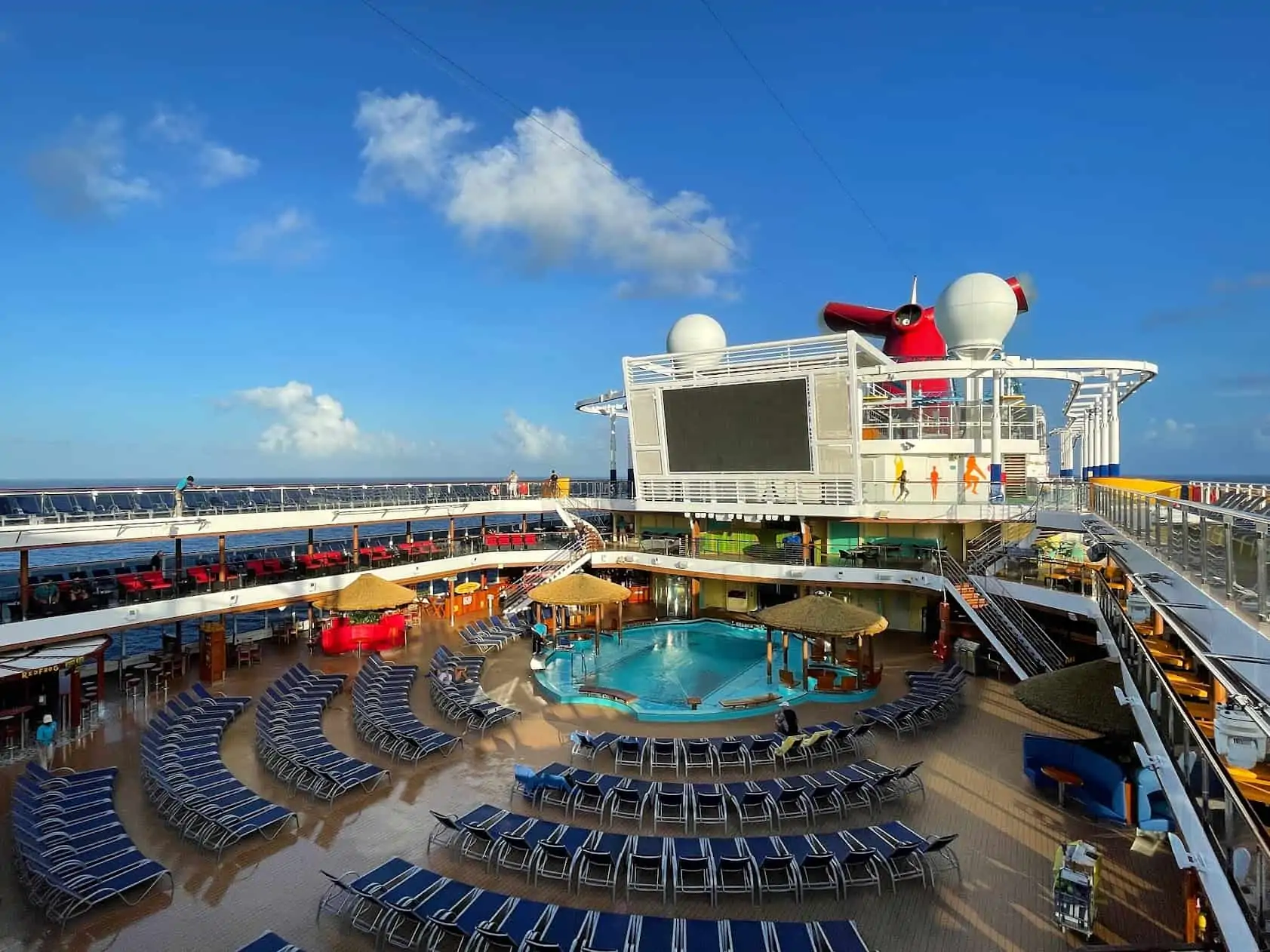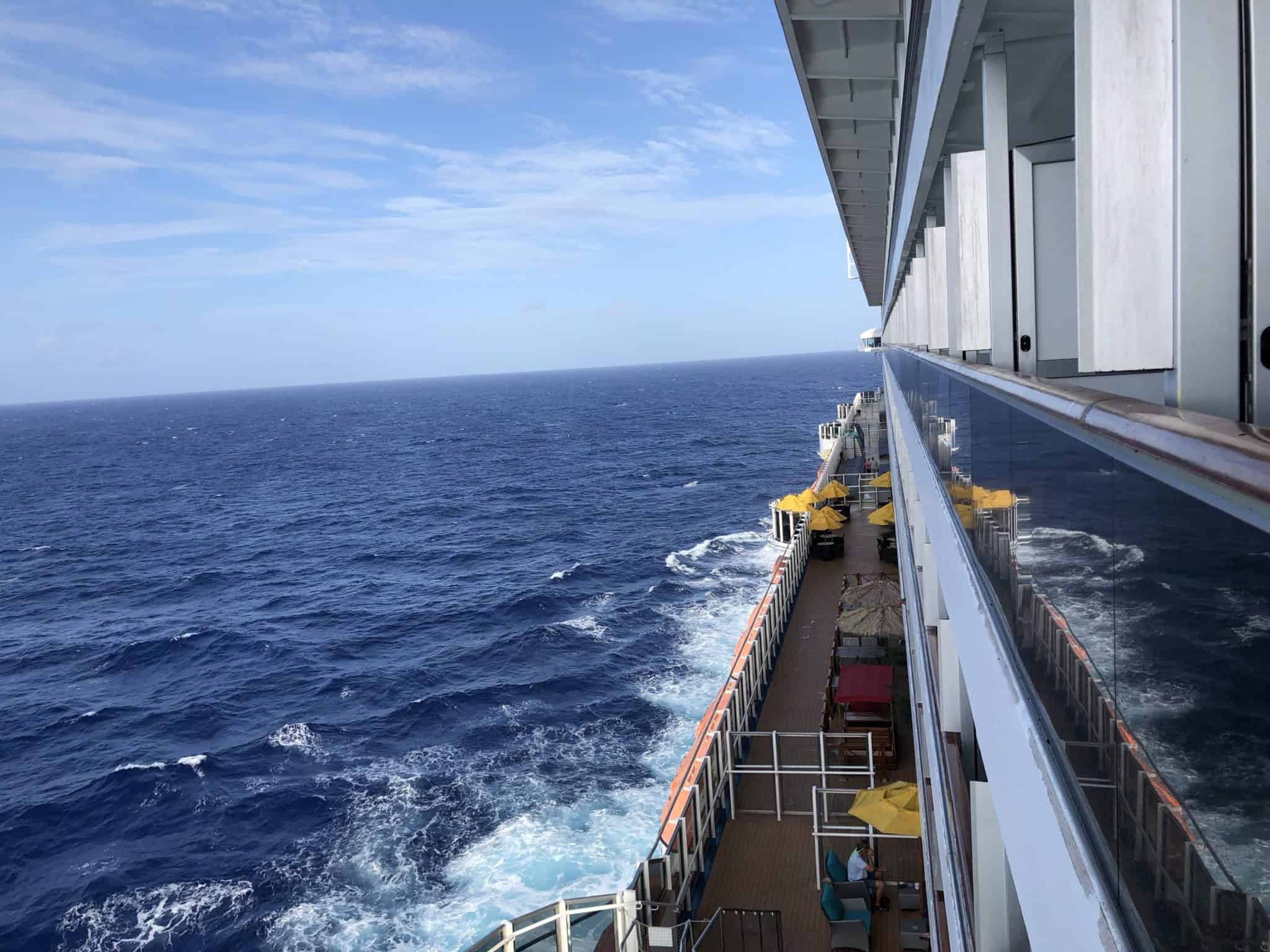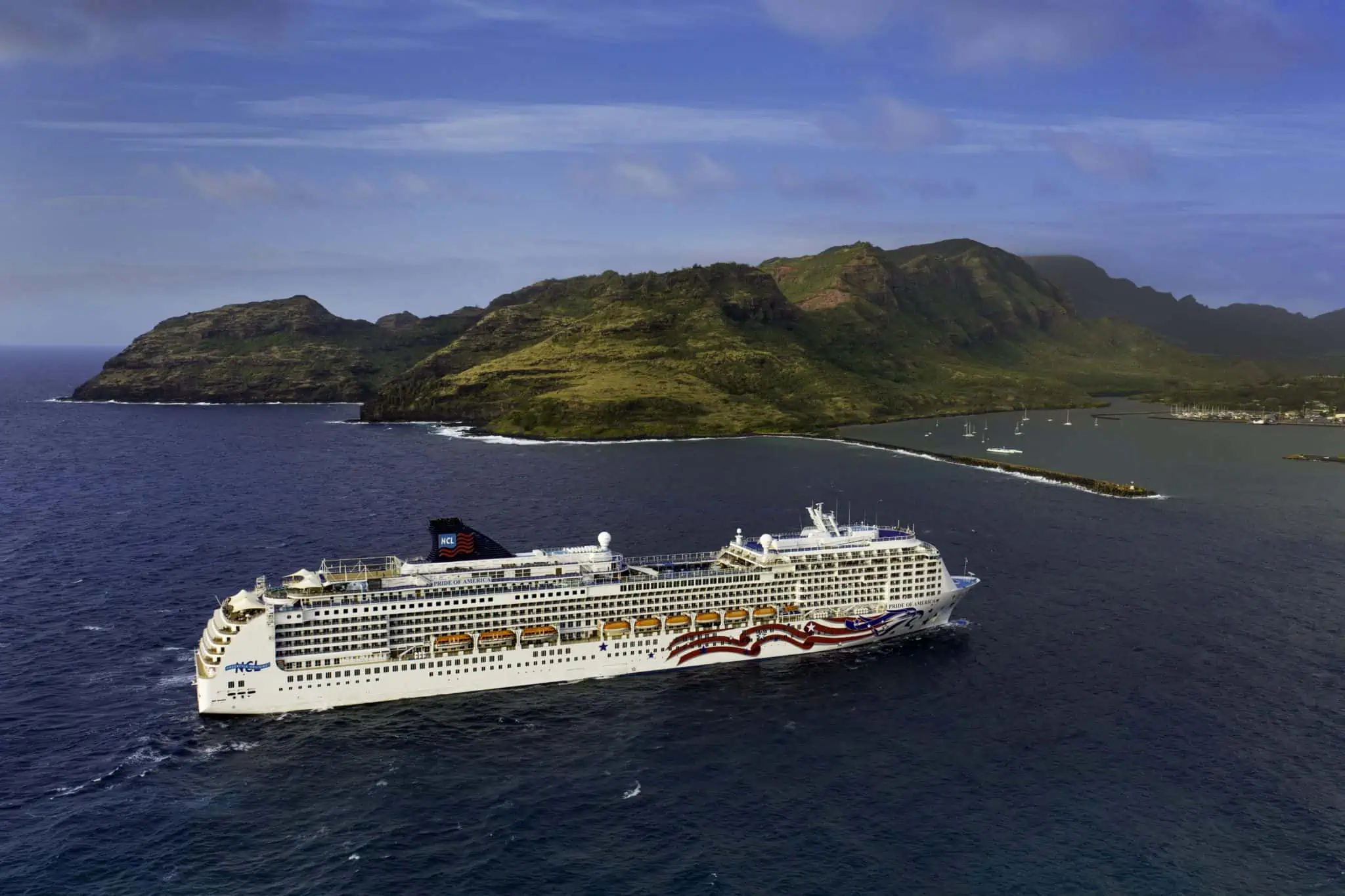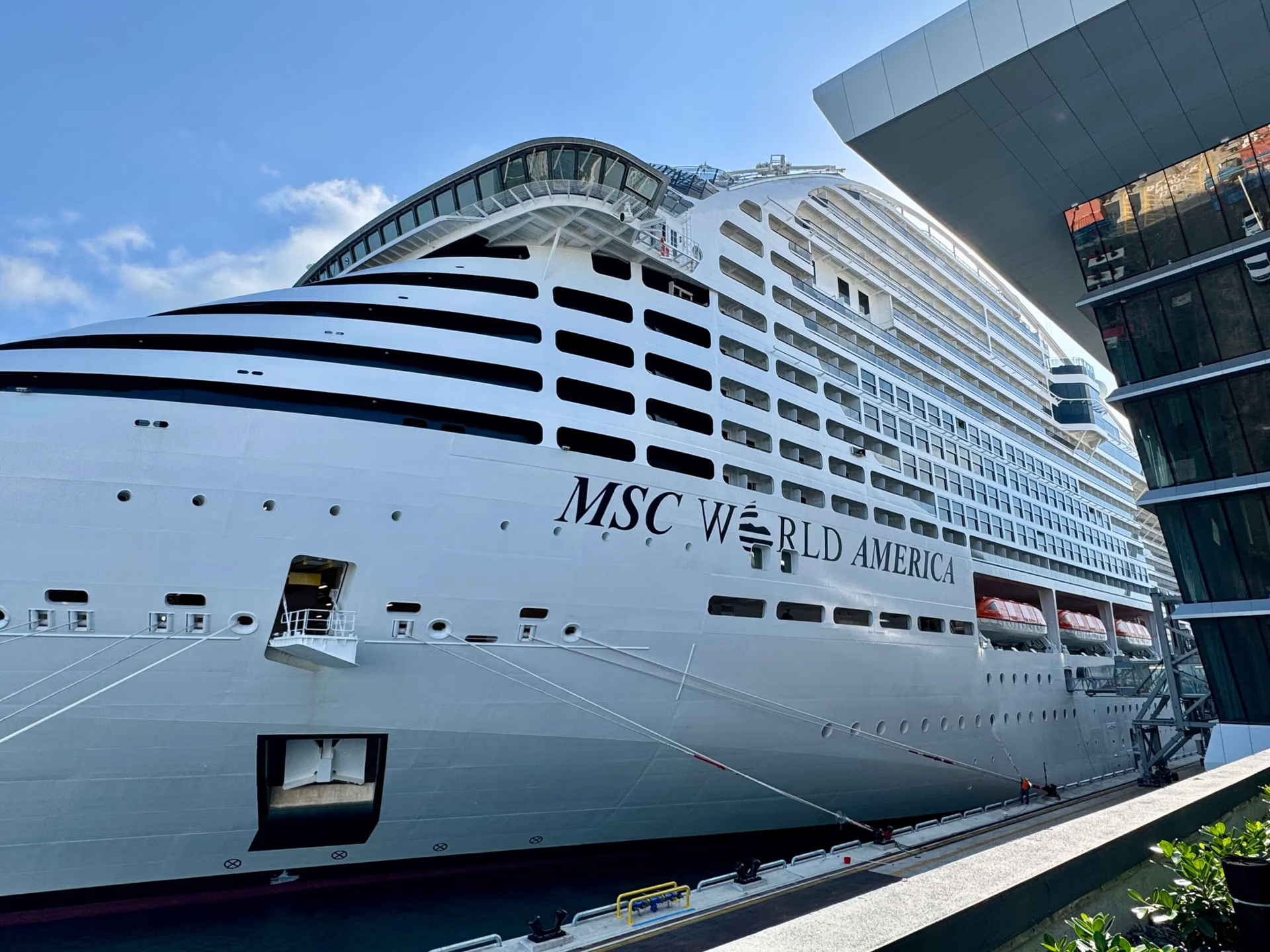Those who struggle with motion or seasickness don’t have to stop going on cruises! With our 7 helpful tips, you’ll get to enjoy a weekend out at sea all you want.

Before we get into it, let’s start by defining the term motion sickness – just what causes it?
Seasickness happens when your brain gets conflicting messages from your inner ears, eyes, and sensory nerves. Your inner ears help with balance by detecting motion while your eyes don’t see that movement. It’s that inconsistency that confuses and agitates your brain.
And while some people are more prone to seasickness than others, it’s still something that could ruin your boat trip. So, check out how you can stop that from happening.
1. Choose the Right Cabin

Picking the right cabin to stay at goes a long way in balancing out your seasickness. We’ve found that the best cabins to book from are those present on the middle or lower deck.
Mid-Ship Cabins
Book a mid-ship cabin to experience the least amount of motion on board. Cabins near the front or back of the ship are more prone to movement, making it harder for travelers prone to seasickness.
To avoid this, consider the mid-ship cabins, which provide a smoother ride since they are in the center of gravity on board. You may also upgrade to a balcony room. Those provide fresh air and natural light that can help reduce nausea while giving stunning sea views.
Lower Decks
Choosing a room on the lower decks can significantly reduce the rocking sensation and help prevent seasickness. If your motion sickness is particularly horrible, pick a cabin in the middle of the lower deck. Such cabins experience the least movement and are as stable as it gets.
Read more: Motion Sickness: Picking the right cabin, itinerary, and cruise ship
2. Take Motion Sickness Medication

When it comes to meds, you have the choice to pick from the following:
- OTC medication
- Prescription meds
- Acupressure wrist brands
Below, we cover each point in further detail to help you figure out the best course of action for your seasickness.
Over-the-Counter Medication
Ginger supplements are a popular natural remedy for motion sickness. They can be capsules or chewable tablets, which you can buy in most drugstores and health food stores. Ginger helps alleviate nausea and vomiting, making it a practical option for those prone to seasickness.
Consider antihistamines, such as Dramamine and Bonine, as well. They block messages between the inner ear and brain that cause nausea and vomiting.
They’re even considered among the best motion sickness medicine for cruises. However, they may cause drowsiness or other side effects.
So, it’s important to follow the recommended dosage instructions carefully – taking more than what’s prescribed won’t increase effectiveness and can only lead to unwanted side effects.
Bonine vs Dramamine

The formula composition of both Bonine and Dramamine is the main difference between either drug. While the two are effective in reducing your motion sickness, Dramamine can make you more drowsy than Bonine.
That’s because Dramamine contains dimenhydrinate – which, while it works more quickly, will cause more drowsiness. On the other hand, Bonine contains meclizine, which provides long-lasting effects and is associated with less drowsiness.
Additionally, meclizine stays in your body for up to 24 hours so you can enjoy the cruise to its fullest. Dimenhydrinate lasts in the body for no more than 4 to 6 hours, though.
When to Take Dramamine Before Cruise?

If you insist on taking Dramamine, know that the medication takes at least 30 minutes to 1 hour to kick in.
As such, it’s recommended that you take it an hour or so before boarding the ship or taking on an activity that triggers your motion sickness. Once you feel your symptoms alleviating, you can proceed to take Dramamine as directed on the packaging.
And if you were to take Dramamine after your motion sickness has taken effect, it’ll still take 30 minutes to an hour before you feel any relief.
Prescription Medication

If over-the-counter medication isn’t working for your motion sickness, then prescription medication may be the answer.
Scopolamine patches, for instance, worn behind the ear, can help prevent nausea and vomiting caused by motion sicknesses. Discuss all options with your doctor before deciding on prescription medication for seasickness relief during your cruise vacation.
Keep in mind also that seasickness medication can be pricey depending on what brand and type you go with. So before travelling, check discount vouchers at Boots and get the best travel sickness medicines.
Use Acupressure Bands

Acupressure bands are a great way to combat seasickness on a cruise ship. These bands use pressure points on the wrist to alleviate nausea and dizziness caused by motion sickness.
They stimulate the body’s natural healing processes, making them a practical, drug-free solution for seasick people.
While there is limited scientific evidence of their effectiveness, many people find them helpful as a non-invasive alternative to medication.
Look for acupressure bands at drugstores or online retailers. They fit comfortably around your wrist and have adjustable pressure settings. It’s essential to wear them before you begin feeling symptoms of seasickness though, so be sure to put them on before setting sail.
Where to Buy Acupressure Bands?
You can buy acupressure bands at Amazon or Walmart, which offer competitive pricing options, and at pharmacies, such as CVS or Walgreens. Specialty stores like REI or outdoor supply shops may also sell acupressure bands.
It’s important to note that not all acupressure bands are the same, so do your research before purchasing. Double-check reviews and ratings from customers who have used the product before.
4. Stay Hydrated

Drinking plenty of water throughout the day can help prevent dehydration, which can worsen motion sickness symptoms.
So, be sure to carry a refillable water bottle and take frequent sips—especially if you’re spending too much time in the sun or participating in activities that make you sweat.
Additionally, limit your intake of alcoholic beverages to avoid seasickness on a cruise. Alcohol can dehydrate you and amplify the effects of motion sickness, making it more likely for you to feel unwell.
Avoid energy drinks that contain high levels of caffeine as well. These glasses can raise heart rate and blood pressure, triggering symptoms such as nausea, dizziness, etc., making it difficult to enjoy your time at sea.
Opting for plain water with electrolytes added – like coconut water – will keep your hydration balanced without causing unwanted side effects.
5. Eat the Right Food

Eating the right foods is one of the best ways to avoid seasickness on a cruise ship.
Stay clear of heavy, greasy meals that can upset your stomach and make you more susceptible to motion sickness. Instead, stick to lighter fare, like fruits, vegetables, and lean proteins.
Don’t stop there; keep eating small meals throughout the day. Doing so will help keep your blood sugar levels stable and prevent feelings of nausea or dizziness.
Consider snacking on crackers or hard ginger candy for extra stomach-soothing goodness between larger meals.
6. Get Regular Fresh Air

Take a break and head up to the deck for some fresh air. Breathing in the salty sea breeze can help alleviate seasickness symptoms and provide a calming effect.
If it’s too windy, try finding a sheltered spot where you can feel the breeze without being exposed to strong gusts.
7. Consider Natural Seasickness Remedies

Remember that old saying about an apple a day can keep the doctor away? While that might not be true, eating apples can alleviate seasickness—but not just any apple, though.
Look for green Granny Smith apples; their pectin combined with natural sugars reduces acid and settles topsy-turvy stomachs.
Peppermint is also known to have the same effects against seasickness. If you’re lucky, you might find some cruise line sundry shops selling peppermint oil.
At the end of the day, cruisers have little to lose by trying out some of these natural solutions for seasickness before taking medication. Their low cost and ease of access are appealing.
Final Thoughts

Don’t let motion sickness keep you from experiencing what the cruise ships offer!
Just remember to stay hydrated, avoid heavy meals, and take preventative medication if necessary to avoid seasickness on a cruise.
The U.S. Centers for Disease Control also lists more tips and remedies to help avoid motion and seasickness.
Medical Disclaimer: This article is not a substitute for professional medical advice, diagnosis, or treatment. Always seek the advice of your physician or other qualified health providers with any questions you may have regarding a medical condition.
Pin it for later!








